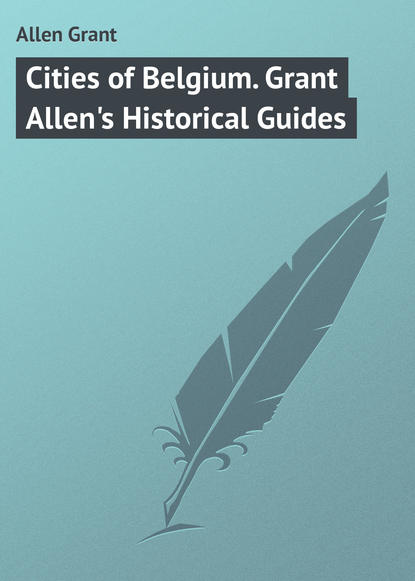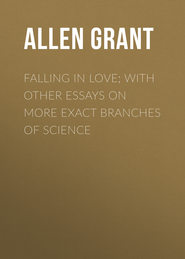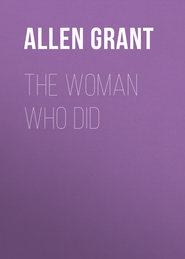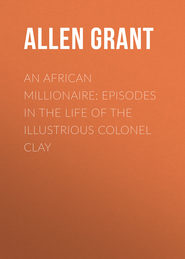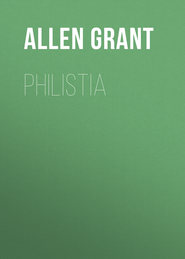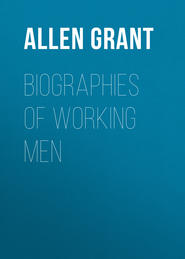По всем вопросам обращайтесь на: info@litportal.ru
(©) 2003-2024.
✖
Cities of Belgium. Grant Allen's Historical Guides
Настройки чтения
Размер шрифта
Высота строк
Поля
5th Chapel. Beautiful modern archaic altar-piece of St. Barbara.
6th Chapel. Nothing of special interest, though in all these chapels the stained-glass windows and polychromatic decorations are worthy of notice.
Opposite it, on the back of the High Altar, painted imitations of reliefs by Van Bree: an extraordinary illusion; Annunciation, Marriage of the Virgin, Visitation. In front of these, Tomb of Isabella of Bourbon, wife of Charles the Bold, and mother of Mary of Burgundy. Altar-back, Death of the Virgin, 17th cent.
7th Chapel. Good modern archaic altar-piece, with a miracle of St. John Berchman. The saints are named on it.
8th Chapel. Tolerable modern archaic altar-piece of Our Lady and Child, with donors and saints.
On the pier, between this and the next chapel, School of Roger van der Weyden, Selection of Joseph as the husband of the Virgin, and Marriage of the Virgin; a good picture.
9th Chapel, of St. Joseph, patron saint of Belgium, and therefore honoured with this larger shrine. On the Altar, modern carved and gilt altar-piece, St. Joseph bearing the Infant Christ. Around it, Scenes from his Life. L. (beginning below), Marriage of the Virgin and Joseph, Nativity, Presentation in the Temple; R. (beginning above), Flight into Egypt, Finding of Christ in the Temple, the Holy Carpenter’s Shop. Centre, Death of St. Joseph. On the wings, R., Philip IV. dedicating Belgium to St. Joseph; L., Pius IX., accompanied by St. Peter, appointing Joseph patron saint of Belgium.
Now enter the N. Transept.
R. wall. Rubens’s famous *Elevation of the Cross. In form a triptych, but with the same subject continued through its three members. Centre, The Elevation: L., St. John, the Mater Dolorosa, and the Holy Women: R., Longinus and the soldiers, with the two thieves. This is one of Rubens’s most bustling pictures, where the mere muscular effort almost wholly chokes the sense of pathos. The dog in the foreground is an exceptionally unhappy later addition by the master. The tone of colour is brown and cold; the work is mainly painted for light and shade. It was formerly the altar-piece in the Church of St. Walburga, who appears with other saints on the outer shutters.
This Transept also contains stained glass of the 17th century.
On the L. wall is a triptych by Francken: Centre, Christ among the Doctors, said to be portraits of the Reformers. L. wing, St. Ambrose baptizing Augustine, with the donor, kneeling. R. wing, Elijah causing the widow’s cruse of oil to be replenished.
The Chapel in the N. Transept has nothing of interest.
Now, enter the Choir, with good modern carved stalls, and a different but less impressive view of Rubens’s Assumption.
The N. Aisle has little of interest, save its stained-glass windows, and a Head of Christ, painted on marble, ascribed to Leonardo, but really of Flemish origin. This is affixed to the first pillar of the Lady Chapel. Further on in the Aisle, confessionals with tolerable wood-carvings.
The Nave has the usual overloaded 17th century pulpit, with Europe, Asia, Africa, and America.
I have only briefly enumerated the principal contents; but you will find much more that is interesting for yourself if you spend an hour or two longer in examining the Cathedral.
C. THE PICTURE GALLERY
[The chief object of interest at Antwerp, even more important than the Cathedral itself, is the Picture Gallery, regally housed in a magnificent Museum at the S. end of the town. The building alone might make Trafalgar Square blush, if Trafalgar Square had a blush left in it. To this collection you should devote at least two or three mornings.
THE PICTURE GALLERY, ANTWERP.Modern Pictures in the Rooms marked with an Italic capital.
The Antwerp Gallery contains in its palatial rooms a large number of Flemish pictures, many of them collected from the suppressed Churches and Monasteries of the city. (Remember that they were painted for such situations, not to be seen in Museums.) You will here have an opportunity of observing a few good pictures of the early Flemish School, and especially of improving your slight acquaintance with Roger van der Weyden, one of whose loveliest works is preserved in the gallery. You will also see at least one admirable example of Quentin Matsys, as well as several fine works of the Transitional School between the early and the later Flemish periods.
But the special glory of the Antwerp Museum is its great collection of Rubenses. It is at Antwerp alone, indeed, that you can begin to grasp the greatness of Rubens, as you may grasp it afterwards at Munich and Vienna. I do not say you will love him: I will not pretend to love him myself: but you may at least understand him. This, then, is the proper place in which to consider briefly the position of Rubens in Flemish Art.
From the days of the Van Eycks to those of Gerard David, painting in the Low Countries had followed a strictly national line of development. Its growth was organic and internal. With Quentin Matsys, and still more with Bernard van Orley, Pourbus, and the rest, the influence of the Italian Renaissance had begun to interfere with the native current of art in the Low Countries. It was Rubens who finally transformed Flemish painting by adopting to a certain extent the grandiose style of the later Italian and especially the Venetian Masters, at the same time that he transfused it with local feeling and with the private mark of his own superabundant and vigorous individuality.
Rubens was an Antwerp man, by descent and education, though accidentally born at Siegen in Nassau. His father was an Antwerp justice of an important family, exiled for supposed Calvinistic leanings, and disgraced for an intrigue with a royal lady, Anna of Saxony, the eccentric wife of William of Orange. A gentleman by birth and breeding, Peter Paul Rubens painted throughout life in the spirit of a generous, luxurious aristocrat. His master was Otto van Veen, Court Painter to the Dukes of Parma, and himself an Italianised Flemish artist, whose work is amply represented in the Museum. Early in life, Rubens travelled in Italy, where he imbibed to a great extent the prevailing tone of Italian art, as represented by Titian, Veronese, and to a less extent, Tintoretto, as well as by Domenichino and the later Roman School of painters. To these influences we must add the subtler effect of the general spirit of the late 16th and early 17th centuries, the age when voyages to America and to India, and the sudden opening of the Atlantic seaboard, had caused in men’s minds a great ferment of opinion and given rise to a new outburst of activity and struggle. Romance was rife. The world was turned upside down. It was the day of Spanish supremacy, the day when the gold and silver of the Indies poured in vast sums into Madrid and the Low Countries. The Mediterranean had given way to the Atlantic, Venice to Antwerp. In England, this age gave us the rich and varied Elizabethan literature; in the Low Countries, it gave us the highly analogous and profusely lavish art of the School of Rubens.
Rubens lived his life throughout on a big scale. He travelled much. He was statesman and diplomatist as well as painter. He moved from Paris to London, from Madrid to Mantua. All these things give a tone to his art. He is large, spacious, airy, voluptuous. He has a bold self-confidence, a prodigal freedom, an easy opulence. He delights in colossal figures, in regal costume, in court dresses and feathers, – the romance and pageantry of the royal world he lived in. Space seems to swell and soar on his canvas. Vast marble halls with huge pillars and lofty steps are the architectural background in which his soul delights. His outlines are too flowing to be curbed into stiff correctness. His sturdy Flemish nature, again, comes out in the full and fleshy figures, the florid cheeks, and the abundant fair hair of his female characters. All scenes alike, however sacred, are for him just opportunities for the display of sensuous personal charm, enlivened by rich costume or wealthy accessories. Yet in his large romantic way he is doing for cosmopolitan mercantile Antwerp in the 17th century what Van Eyck and Memling did for cosmopolitan Ghent and Bruges in the 15th.
One more peculiarity of his art must be mentioned. The early painters, as we saw in the St. Ursula casket, had little sense of real dramatic life and movement. Rubens had learned to admire this quality in his Venetian masters, and he bettered their instruction with Flemish force and with the stir and bustle of a big seaport town in an epoch of development. His pictures are full, not merely of life, but of strain, stress, turmoil. It is more than animation – it is noise, it is tumult. He often forgets the sacredness of a scene by emphasizing too much the muscular action and the violent movement of those who participate in it. This is particularly noticeable in the Descent from the Cross in the Cathedral, and still more in the famous Coup de Lance at the Museum.
The astonishing number of pictures which Rubens has left may be accounted for in part by his incredible rapidity of execution – he dashed off a huge picture in a fortnight, – but in part also by the fact that he was largely assisted by a numerous body of pupils. Of these, Van Dyck was by far the most individual, the tenderest, the most refined: and not a few of his stately and touching masterpieces may here be studied.
The Dutch School is also represented by several excellent small pictures.
Of alien art, there are a few fine pieces by Early Italian artists.]
The entrance door is under the great portico on the west front, facing the river. Open daily, 9 or 10 to 4 or 5, 1 fr. per person: free on Sundays. (Inquire hours of hotel porter.)
You pass from the Vestibule (sticks and umbrellas left) into a Hall and Staircase of palatial dimensions, admirably decorated with fine modern paintings by N. De Keyser, of Antwerp, representing the Arts and Artists of the city, the influence upon them of Italian masters, and the recognition extended to their work in London, Paris, Rome, Bologna, Amsterdam, and Vienna. I do not describe these excellent pictures, as the inscriptions upon them sufficiently indicate their meaning, but they are well worth your careful attention.
The rooms are lettered (A. B. C. etc.) over the doorways. On reaching the top of the staircase, pass at once through Rooms J. and I., and go straight into
Room C
Hall of the Ancient Masters, Flemish or foreign.
Right of the door,
224. Justus of Ghent: a bland old pope, probably St. Gregory, holding a monstrance, between two angels. In the background, a curious altar-piece, with the Annunciation, Nativity, Adoration of the Magi, Flight into Egypt, Presentation in the Temple, and Finding of Christ in the Temple. Above it, two female saints (or figures of Our Lady?). A good work, in an early dry manner.
Above it, 463. Madonna and Child, by Van Orley: the landscape by Patinier. From a tomb in the Cathedral.
383. Van der Meire. Triptych from an altar; Centre, Way to Calvary, with St. Veronica offering her napkin, and brutal, stolid Flemish soldiers bearing the hammer, etc. In the background, the Flight into Egypt. The wings have been transposed. L., (should be R.), the Finding of Christ in the Temple. R. (should be L.), the Presentation in the Temple.
Above it, 380. Van den Broeck (1530-1601): a Last Judgment. Interesting for comparison with previous examples. Renaissance nude.
557. Unknown. Dutch School of the early 16th century. The Tiburtine Sibyl showing the Emperor Augustus the apparition of the Virgin and Child on the Aventine. A page, his robe embroidered with his master’s initial A., holds the Emperor’s crown. Very Dutch architecture. (The Catalogue, I think erroneously, makes it the Madonna appearing to Constantine.)
560. Good hard early Dutch portrait.
527. Unknown. Resurrection, the Saviour, bearing the white pennant, with red cross, and sleeping Roman soldiers.
42. An Adam and Eve, attributed to Cranach the Elder. Harsh northern nude.
341. Good portrait by Susterman, alias Lambert Lombard.
Above these, Madonna, in the Byzantine style, with the usual Greek inscriptions.
521. School of Albert Dürer: Mater Dolorosa, with the Seven Sorrows around her.
549. Good Flemish portrait of William I., Prince of Orange.
Above, 387, Van der Meire: an Entombment, with the usual figures, Nicodemus and Joseph of Arimathea; the Magdalen in the foreground with the box of ointment; the Mater Dolorosa supported by St. John (in red); and, behind, the two Maries. In the background, a Pietà– that is to say, the same group mourning over the Dead Saviour.
425. Van Hemessen: The Calling of Matthew from the receipt of custom. Harsh and uninteresting.
568. School of Quentin Matsys: Christ and St. Veronica. Probably part only of a Way to Calvary. The spiked club is frequent.
241. Quentin Matsys: a fine and celebrated *Head of the Saviour Blessing, with more expression than is usual in the Flemish type of this subject. Notice even here, however, close adhesion to the original typical features.





